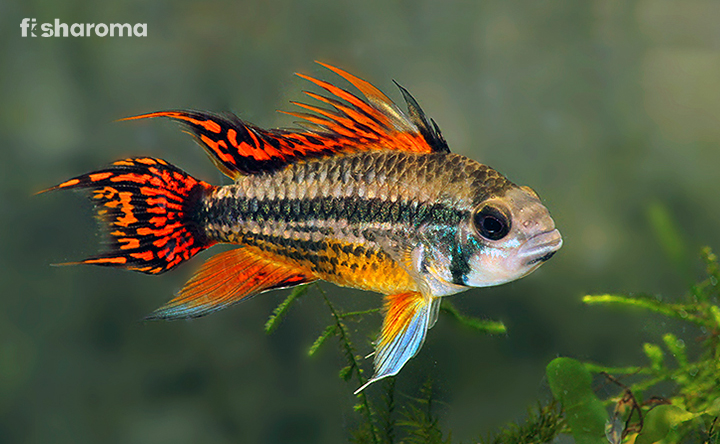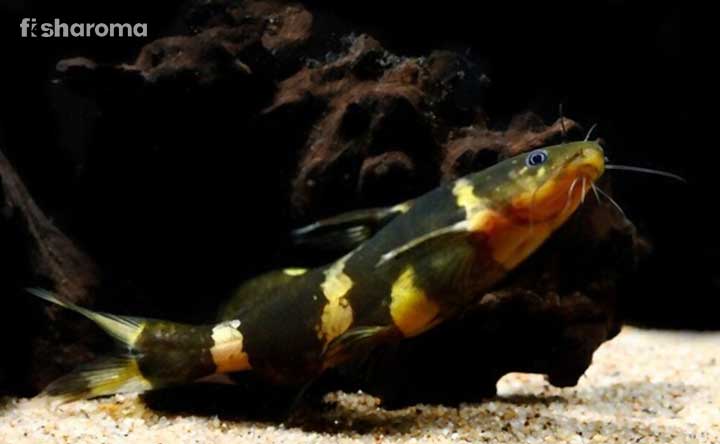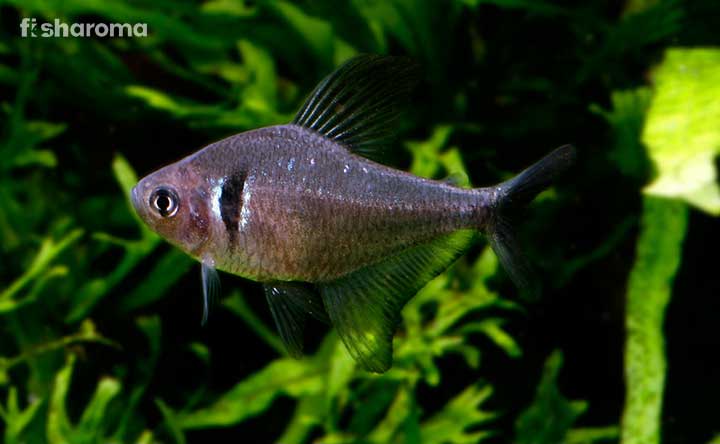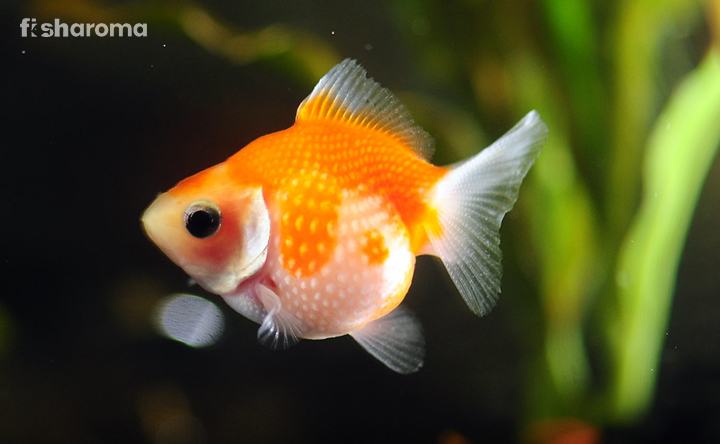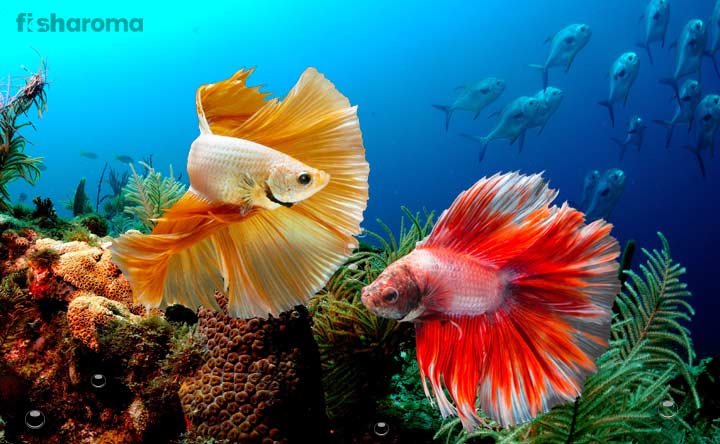Rope Fish – Ultimate Care Guide for This Unconventional Species
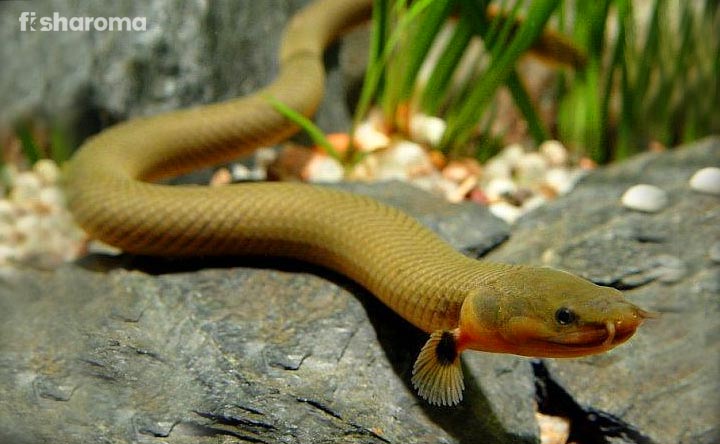
Bored of hosting the same old regular, fancy, and popular fish in your freshwater tank? Or simply looking for bringing a variation in the type of aquatic pet you keep? Want to challenge yourself by hosting an unconventional aquatic pet? Well, we might have an answer for you – the Rope Fish. With a fearsome appearance, they are bound to catch the attention of anyone who lays their eyes on them. But, getting to know them up and close, you will realize how easy they are to care for. So, let us help you get acquainted with them. Here’s presenting the ultimate care guide for Rope Fish.
Key Specifications of Rope Fish
Take a look at some of the key specifications of Rope Fish that will help you get an idea of their life.
| Scientific Name | Erpetoichthys calabaricus |
| Family | Polypteridae |
| Origin | Africa |
| Size | Maximum 15” (38 cm) |
| Color | Greenish-yellow with a tint of brown |
| Care Level | Easy |
| Lifespan | 15-20 years |
| Temperament | Peaceful |
| Compatibility | Moderate |
| Tank Size | 45-Gallons |
| Diet | Carnivore |
Overview
Despite being not one of the intensely-colored species, adding Rope Fish to your tank helps in changing the dynamics of the tank environment owing to their unorthodox behavior and appearance. They are a member of the Polypteridae family and are scientifically called Erpetoichthys calabaricus.
The first part of their scientific name, which is the genus name – Erpetoichthys- has been derived from the Greek words ‘erpeton’ meaning ‘creeping thing’ and ‘ichthys’ meaning ‘fish’.
Nocturnal by nature, they are also known as Reed Fish, African Rope Fish, and Snake Fish. Their fierce demeanor couldn’t be any more opposite than their behavior since they are peaceful and extremely easy to care for.
Origin & Habitat of Rope Fish
Native to the continent of Africa, Rope Fish can be found in abundance in Cameroon, Nigeria, the Republic of the Congo, and Benin, where they inhabit the area from the Chiloango River to Ogun River.
In the wild, these tropical beasts usually are seen in slow-moving or even standing waters that are warm and have low-dissolved oxygen content. Although they are a freshwater species, they have been spotted in brackish water as well.
Appearance of Rope Fish
The most intriguing aspect of Rope Fish is clearly their appearance, which is compared to that of a snake or a rope. This exotic fish has a long cylindrical-shaped body wherein their fins are almost reduced to the point of being totally absent.
Much like a snake, their bodies can be manipulated into waves for thrusting, which allows them to move on land as well.
Sexual dimorphism is extremely low, meaning it is extremely hard to separate the males from the females just by looking at them. Some suggest that the number of rays on the dorsal fins of males is higher than that of a female, but it is anyways difficult to count the rays on them in the first place since they are so small. The dorsal fin comprises a series of well-separated spines, with each of them supporting a membrane and one or several articulated rays.
Caudal and ventral fins are negligible in them, although some argue that their entire body is a caudal fin in itself. The pectoral fins are also extremely small, and are positioned right behind their head, and are often mistaken for their ears.
They have poor eyesight and they mainly rely on their sense of smell and touch. The low content of oxygen in the water that they live in the wild forces them to get up to the water surface from time to time to breathe the atmospheric air. The presence of lungs enables them to survive out of the water on a temporary basis. They also have nostrils on tentacles that extend from their flattened head.
Size of Rope Fish
Rope Fish are a fairly large species when compared to other aquatic pets and can grow to a length of 15” (38 cm). In the wild, they can even grow up to 20” (50 cm) in length. In a single year, you can see about 70% growth in their body size.
Color of Rope Fish
The body of a Rope Fish is greenish-yellow in color that has a brownish touch to it. It is covered entirely in diamond-shaped thick bony scales that help this freshwater species blend perfectly in dark areas.
While the greenish-brown tint is on the upper side of their body, the beige-yellow tint is seen over their abdomen area.
Behavior of Rope Fish
Due to their nocturnal nature, they hunt out at night, sneaking on their prey. However, in an aquarium setting, they can become active during day if you feed them at that time. They also spend a huge amount of time at the bottom of the tank and head up to the surface only to breathe from time-to-time.
Their smooth and ethereal movement in the water is captivating to watch, similar to the way an Eel moves. Rope Fish are peaceful and shy by nature and are not known for attacking others unless provoked or attacked. Their poor eyesight might make them appear reclusive or reserved, but they are very social. They love to hide and are known for their jumping skills.
As we said earlier, their fearsome appearance doesn’t conform to their calm peaceful behavior.
Lifespan of Rope Fish
Rope Fish have a pretty long lifespan when compared with most other aquatic species. They live up to 15-20 years, which means they would need a long-term commitment from your end if you plan to host them their entire life.
Diet of Rope Fish
Carnivorous by nature, Rope Fish sustain themselves in the wild by feeding on small worms, insects, frogs, and crustaceans. Since they are predators who prefer hunting their own food, it might take time for them to get used to flakes and pellets in an aquarium, but with due time, they will turn around. However, avoid dried food since Rope Fish are highly resistant to them.
It is recommended to feed them just before turning off their light. This will ensure that they don’t starve themselves.
Although they can survive without food for a long period in the wild, we strictly advise not to practice that in an aquarium since the dynamics of the natural environment and captive environment isn’t the same. You can feed them small portions of food every day or feed them large portion of food every other day. Ideally, adults should be fed every day or two while juveniles should be fed twice daily.
An ideal diet for a Rope Fish should consist of the following items:
- Bloodworms
- Mussels
- Insect Larvae
- Small Prawns
- Chopped Meat
- Calamari
- Mosquito Larvae
- Brine Shrimps
- Mysis Shrimps
- Earthworms
You should feed Earthworms and Mysis Shrimps to Rope Fish only in their adulthood.
Tank Requirements for Rope Fish
It is crucial that any pet that you have in your aquarium feel safe in their captive environment. Thus, you need to replicate the elements of the natural environment in your aquarium as much as you can. Keep in mind the following aspects while building their home.
Tank Size
Due to their considerably large size, you would need at least a 45-gallon tank for them. While selecting their tank, go for a rectangular one with as much floor space as possible instead of a tall one. With each Rope Fish you add to the tank, you need to increase the size of your tank by 10 more gallons.
Tank Lid
Similar to an Eel, they are excellent escape artists. This is why not only you would require a secure and firm lid, but you also need to ensure that it has locks or weights on it. In addition, there shouldn’t be any hole in it through which the Rope Fish can escape. Close any gaps in your tank with hard sponge.
They are equipped to survive on land for a temporary period of time. So, don’t risk not having a tank lid with this freshwater species. Even if you think that the water level is low and well below the top of your tank, you need to remember that they are excellent jumpers and can jump their way out of the tank.
Try to not keep them unattended while transferring them to another tank or bucket while cleaning your aquarium. It is better if you ask someone to watch over them as you clean the tank.
Substrate
Since they love slithering through the substrate, please ensure you don’t use any rough pointy substrate. Go for a fine-grained sandy substrate. This will make sure that they don’t scratch themselves to any injury.
Filter
They are infamous for creating a lot of organic wastes and litter in their surroundings. This is why you need to provide a canister filter in their tank. You don’t need any air pump to keep the water moving since they are used to living in slow-moving waters.
Nature of Lighting
They can survive under any lighting condition, but if you are opting for a bright lighting system, make sure that certain corner(s) in your tank is dark which will help mimic their natural environment.
Presence of Flora
Rope Fish are carnivorous, meaning there is no risk of your aquatic plants being eaten off by them. So, feel free in having plants such as Java Fern and Amazon Sword in your tank. Don’t overplant your tank though!
Ornaments
Due to the fact that they love hiding, try to provide rocks, caves and other aquarium decorations that will serve as shelter to them. As long as they don’t have any sharp edges to them and are not made with toxic colors, they are safe to use.
Cleaning Method
Regular cleaning of the tank will contribute to the well-being of your Rope Fish. Scrape algae of the ornaments and interior walls and thoroughly clean the entire tank to make sure there are no debris or leftover food or waste materials.
We advise not to use soaps or any chemical-based product since their residue might adversely affect the health of your pet. Simply cleaning the ornament and substrate under running water and using a soft cloth to wipe off the interior walls with lukewarm water will suffice.
Water Type for Rope Fish
The water that you use in the tank that hosts a Rope Fish should meet the following parameters.
Temperature
Since they prefer slightly warmer water, try to keep the temperature of your tank between 72–82 °F (22–28 °C). You may use a submerged thermometer to keep track of the temperature inside the tank.
pH Level
The pH level of the water should be 6.7-7.8. You can regularly keep a check on it by testing them with pH testing kits available in the market.
Hardness
The hardness of the water should be maintained between 4-18 dH.
Replacement Procedure
Water replacement is an integral part of maintaining an aquarium. It helps in ensuring a healthy life for your pet. With that in mind, don’t replace the entire water content at once since it would kill off the beneficial bacteria from your tank while also destroying the ecological balance of the tank.
The new batch of water that you add to your tank should have similar features to that of the existing water in your tank. You can follow one of the flowing three water replacement procedures to suit your schedule. Please pick ONLY ONE of these three schedules.
| Amount of Tank Water to Be Replaced | Frequency of Water Replacement |
| 10% | Weekly |
| 20% | Fortnightly |
| 40% | Monthly |
Compatibility of Rope Fish
Rope Fish are social beings and are pretty compatible with each other. They don’t display aggressive behavior with one another and are pretty calm. They are not territorial and you can even keep a group of six together.
The only hindrance people face in keeping them in multiple numbers is the fact that with each Rope Fish added, you would need extra tank space (10 gallons) and the tank size for a single Rope Fish (45 gallons) is anyways large, to begin with.
Suitable Tankmates for Rope Fish
While picking tankmates for Rope Fish, go for peaceful species. In addition, also ensure that they are large or at least, of similar size to them.
Ideal tankmates for a Rope Fish are as follows:
- Angelfish
- Clown Loach
- Yoyo Loach
- Siamese Algae Eater
- Bala Shark
- Dwarf Gourami
- Glass Catfish
- Pictus Catfish
- Rainbow Shark
- Plecostomus
Unsuitable Tankmates for Rope Fish
As far as unsuitable tankmates for a Rope Fish is concerned, you need to keep in mind two aspects. First, avoid keeping them with aggressive species and secondly, don’t keep them with species that are small enough to fit into their mouth since Rope Fish will mistake them for their food. They don’t normally eat fish, but hunger might propel them eat small fish.
Therefore, the species you need to avoid keeping with a Rope Fish are as follows:
- Oscar
- Convict Cichlid
- Flowerhorn Cichlid
- Harlequin Rasbora
- Tetra
- Danio
- Shrimp
- Snail
- Other small invertebrates
Breeding of Rope Fish
Breeding Rope Fish is extremely rare and is almost unheard of and is mostly done with hormonal injections which should be done by experts only. In addition, it is also difficult in sexing them to identify which is male and which is female. Still, if you want to go for it, here is the laydown of their breeding.
To encourage breeding, start by slightly raising the temperature of the tank and by providing tall plants such as Water Wisteria in their tank. While courting, the male and female swim together in the tank and once the female is ready; she will sit motionless until the eggs are fertilized. The eggs are self-adhesive and stick themselves to the ornaments and plants of your tank.
The eggs will hatch after around 70 hours and they don’t eat anything until they are three weeks old. They sustain themselves with the nourishment they receive from the yolk sac. It is advised to keep them separated from their parents at this stage since they might get eaten by them. We still recommend highly you to not forcefully breed them artificially and let fish experts do it.
Rope Fish Diseases
They are hardy, but not completely immune from diseases. In fact, they don’t do well with changes in the water condition. Sudden changes in their behavior such as loss of appetite or reduced movement or even physical changes like visible wounds, odd markings, or change in their colors, are all symptoms of diseases.
The most common disease in them is Ich which is marked by white spots in their bodies. We strongly advise you to take veterinarian help when you spot these symptoms in them instead of home-made remedies.
Interesting Facts about Rope Fish
- Rope Fish can survive in saltwater that has a salinity level of 1.020.
- They have a strong sense of smell.
- Despite their large size, they themselves are victims of bullying by other species.
Summary
Rope Fish are an intriguing species and are known for their mesmerizing swimming style and curious nature. They are peaceful and social species that are not known for attacking others. Apart from the fact that you can’t keep them with invertebrates and small fish (because they would be mistaken as food), they are really easy to care for despite their fearful appearance.
So, if you are a fan of unconventional-looking species, then bring this home. Remember, they are excellent escape artists and can survive temporarily out of water. So, secure your tank with a firm lid and make sure there are no holes in your aquarium from which they can escape. We hope this care guide has helped you in having a decent understanding of how to take care of a Rope Fish.
Care Guides for Similar Unconventional Freshwater Species
If you are a fan of unconventional-looking species, then these following pets would interest you.
- Black Ghost Knifefish – Shaped like a knife and colored in black, almost like a ghost, these fish are slowly becoming a favorite for fishkeepers.
- Kuhli Loach – Similar to a Rope Fish, they may look dangerous but they are gentle, peaceful creatures that you can host in your aquarium.
- Glass Catfish – The ethereal looking, peaceful Glass Catfish is a nature’s wonder that you need to see to believe. No wonder fishkeepers love rearing them in their aquarium.


